#pachycephalosaurids
Text

#Archovember Day 25 - Tylocephale gilmorei
The pachycephalosaurids are famous for their thick, armoured heads, but one dome rose above the rest. Living in Late Cretaceous Mongolia, Tylocephale gilmorei, while a medium-sized pachycephalosaur, had the tallest known dome head comparable to body size. This dome could sustain higher forces of impact than other pachycephalosaurids. Like other pachycephalosaurs it likely ate plants and insects, though it had serrations on its teeth that may have allowed it to eat tougher materials like seeds and nuts.
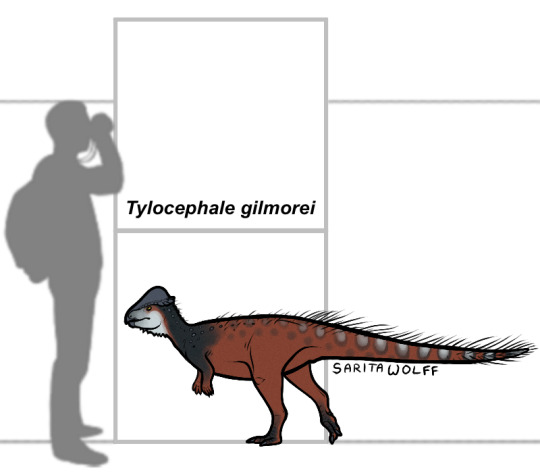
Tylocephale lived in an arid alluvial plain. It lived alongside a variety of other dinosaurs in the Barun Goyot Formation including ankylosaurs like Saichania, Tarchia, and Zaraapelta, protoceratopsids like Bagaceratops and Breviceratops, the titanosaur Quaesitosaurus, dromaeosaurs like Kuru and Shri, halszkaraptorines like Hulsanpes, oviraptorids like Conchoraptor, Heyuannia, and Nemegtomaia, alvarezsaurids like Khulsanurus and Parvicursor, and birds like Gobipipus, Gobipteryx, and Hollanda.
#my art#SaritaDrawsPalaeo#Tylocephale gilmorei#Tylocephale#pachycephalosaurs#pachycephalosaurids#ornithischians#dinosaurs#archosaurs#archosauromorphs#Archovember#Archovember2023
23 notes
·
View notes
Text

Pachycephalosaurus >>>>
372 notes
·
View notes
Note
have you ever drawn any akylosaurs?


i have drawn a few ankylosaurids! also included a self portrait because you could count me as an ankylosaurid - pachycephalosaurid mix
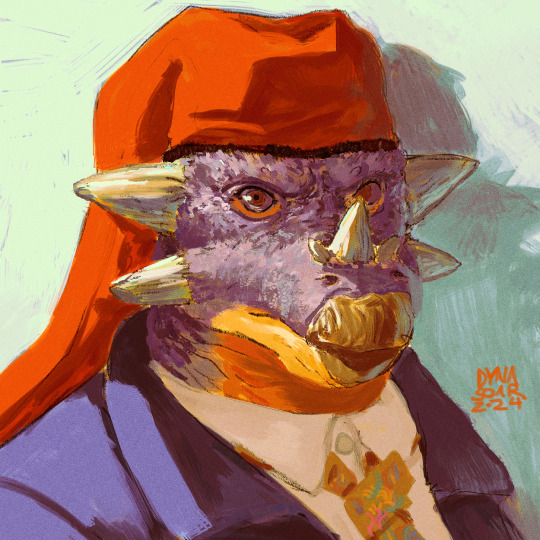
#asks and answers#dinosaur#dynasoar5#saurian#ssohardd#anthro#furry#anthro art#furry art#ankylosaurus#ankylosaurid#pachycephalosaur#pachycephalosaurid#fantasy art#painting#art
81 notes
·
View notes
Photo

another comm I never posted here! a headstrong Cephie for Terra_Bites on twitter
98 notes
·
View notes
Text
Stegoceras

Stegoceras is a pachycephalosaurid dinosaur that lived in what is now North America during the Late Cretaceous period. It is one of the most completely known pachycephalosaurs, and one of the few known from more than just the skull. Stegoceras was a small, bipedal dinosaur about 2-2.5 m long, and weighed around 10-40 kg. The skull was roughly triangular in shape with a short snout, and had a thick, broad, and relatively smooth dome on the top. Stegoceras had a thick shelf over the back of the skull, and a thick ridge over the eyes. Much of the skull was ornamented by round outgrowths and knobs, many in rows, and the largest formed small horns on the shelf.
57 notes
·
View notes
Text
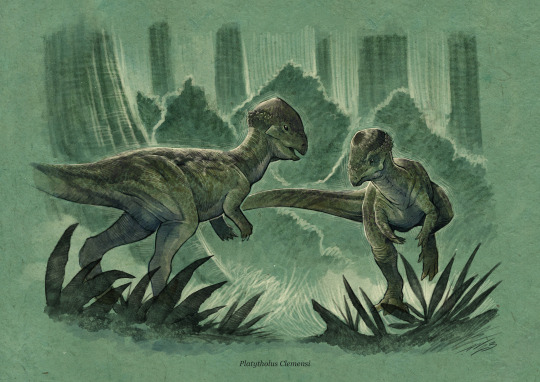
Day 6 - A couple of Platytholus clemensi fighting over mate, the newly described pachycephalosaurid species of the Hell Creek Formation, Montana, from the Late Cretaceous
308 notes
·
View notes
Text

this pachycephalosaurid looks oddly familiar
9 notes
·
View notes
Text
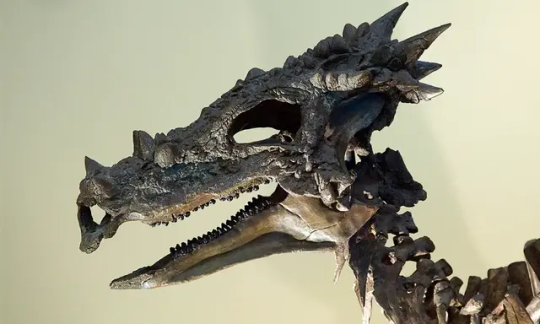

Happy Fossil Friday and Lunar New Year!
Who: Dracorex hogwartsia
name meaning: "Dragon king" "Hogwarts"
pronunciation: Drake-oh-rex Hog-warts-ee-ah
What: A pachycephalosaurid
When: Late Cretaceous
Where: South Dakota's Hell Creek Formation
Fun fact!: There is some debate over the placement of Dracorex, whether it represents its own species or if it is merely one of the ontogenetic (growth) stages of Pachycephalosaurus proper. If the later is true, it gives implications of how the dome in pachycephalosaurs is related to age and perhaps mating, only developing for sparring purposes among mating individuals. Research into microfractures and pathological resorption of bone in the domes has already corroborated.
Here is a link to a paper talking about such pathologies if anyone is interested in learning more!
Why are they cool?: Without the wicked name, Dracorex is holds an interesting place in dinosaur debate circles. There are quite a few species, including the very controversial Nanotyrannus that have been argued as seperate species vs. ontogenetic stages. These kinds of discoveries keep things interesting and offer some pretty interesting insights into how these creatures grew and lived.
Image Credits: (Left: Dragon-like Dinosaur Named 'Dracorex Hogwartsia' (roaring.earth) Right: Masato Hattori)
#palaeontology#paleontology#fossil friday#fossils#paleo#paleoart#palaeoart#Dakota#Dracorex#dragon#hogwarts#lunar new year#pachycephalosaurus#hell creek#cretaceous
12 notes
·
View notes
Text
A pachycephalosaurus skull pin that I sculpted
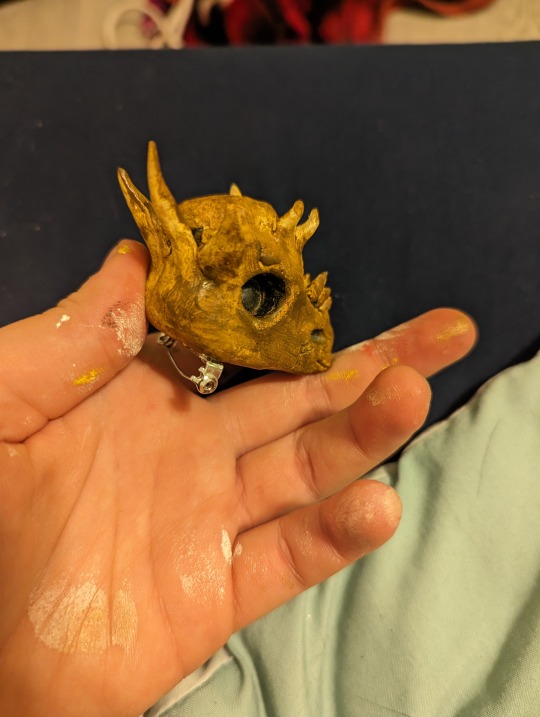
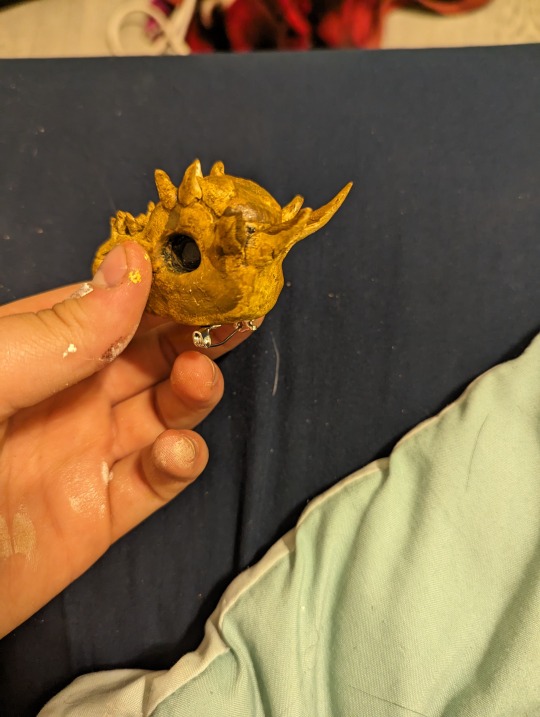
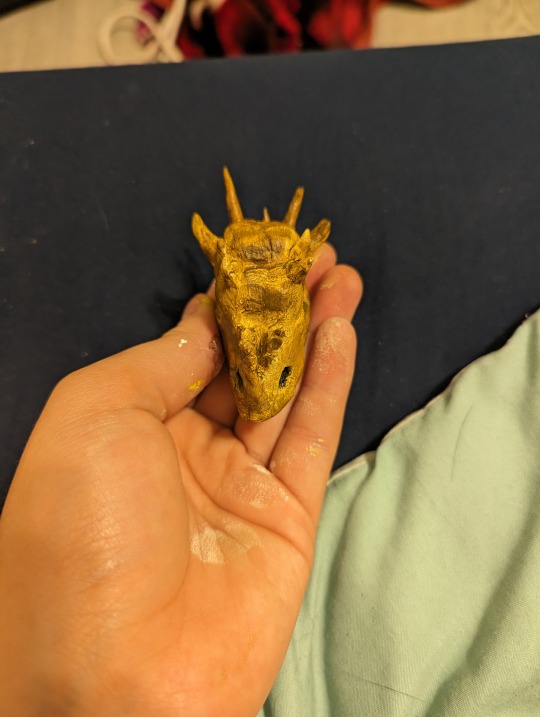


Fun fact: did you know that because of the amount of iron that is in the dirt where fossils are, fossils are actually a rusty brown color! Another fun fact: some paleontologists believe that the Stygimoloch might be a juvenile of the Pachycephalosaurus Wyomingensis. There are some theories that the other pachycephalosaurid, the Dracorex hogwartsia (which means "dragon king of Hogwarts") might be a female specimen of the P. Wyomingensis, but that's just speculation.
#P. Wyomingensis#Pachycephalosaurus#Stygimoloch#Dracorex hogwartsia#Dinosaurs#palentology#Fossils#Pins#Brooches#paleoart#paleoblr
38 notes
·
View notes
Text
Episode 505: The State of Headbutting Science
I Know Dino Podcast Episode 505: The State of Headbutting Science. Some headbutting animals suffer brain damage from the shock; Plus Mississippi has a new most complete dinosaur; Histology can help tell a dinosaur fossil from other dinosaurs; and more.
Episode 505: The State of Headbutting Science. Some headbutting animals suffer brain damage from the shock; Plus Mississippi has a new most complete dinosaur; Histology can help tell a dinosaur fossil from other dinosaurs; and more.
News:
Paleontologists reviewed what it means to have a dome-head and to headbutt like a pachycephalosaurid (and other prehistoric animals) source
Mississippi has a…
4 notes
·
View notes
Text

#Archovember Day 8 - Zhejiangopterus linhaiensis
Azhdarchids are known as the largest flying animals of all time, the last great stand of the pterosaurs before . They contained mighty giants like Quetzalcoatlus and Hatzegopteryx, who ruled the skies of the Late Cretaceous. But not all azhdarchids were flying carnivorous giraffes. Some of them were downright tiny, while others reached a more modest, respectable size. Slightly larger than a female Pteranodon, Zhejiangopterus linhaiensis was one such “moderately large” azhdarchid.
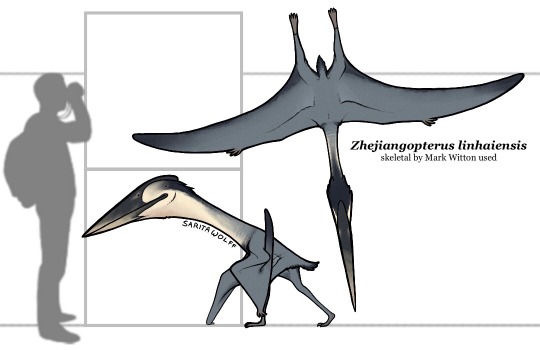
Zhejiangopterus lived in Late Cretaceous China and is so far the most complete azhdarchid known, making it very influential to our understanding of this amazing family of pterosaurs. As several specimens have been uncovered, it was probably fairly common in the Tangshang Formation. It lacked the bony crest seen in many of their relatives, instead opting for a long, straight, graceful profile. Like other azhdarchids, Zhejiangopterus were likely terrestrial stalkers similar to storks and ground hornbills, only using their wings to escape predators or move to new hunting grounds.
Not many other animals have been found in the Tangshang Formation. Alongside Zhejiangopterus, there is only the avialan Yandangornis (whose eggs and chicks and perhaps even adults, if they could catch them, could have been prey for the pterosaur) and an unnamed therizinosauroid. However, living in Late Cretaceous China, it could have also come across the titanosaur Dongyangosaurus further South, and further inland: the ankylosaur Gobisaurus, the pachycephalosaurid Sinocephale, the ornithomimid Sinornithomimus, the carcharodontosaurid Shaochilong, and the mysterious theropod Chilantaisaurus. No doubt there were also plenty of lizards, snakes, mammals, amphibians, and small dinosaurs hiding in the coastal grasses, ready to be nabbed by the dragon of Zhejiang.
#my art#SaritaDrawsPalaeo#Zhejiangopterus#Zhejiangopterus linhaiensis#azhdarchids#pterodactyloids#pterosaurs#archosaurs#archosauromorphs#reptiles#Archovember#Archovember2023
59 notes
·
View notes
Text
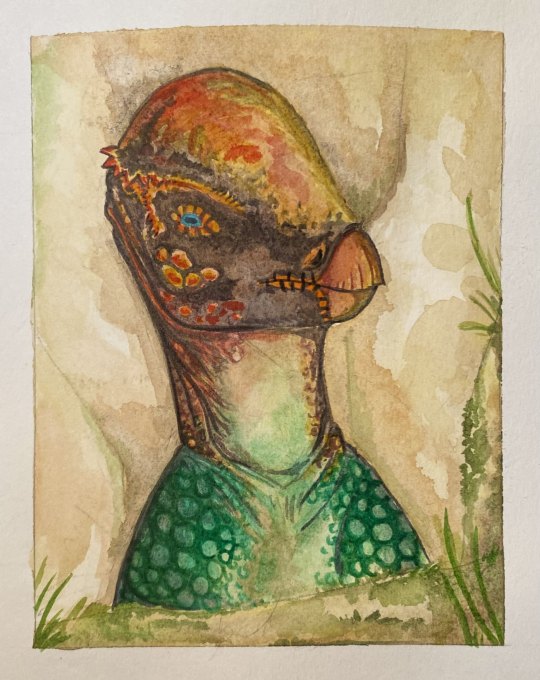
Prenocephale watercolor sketchbook doodle
#paleoart#dinosaur#paleoblr#paleontology#traditional art#prenocephale#pachycephalidae#pachycephalosaurid#watercolor
24 notes
·
View notes
Text
Platytholus clemensi Horner et al., 2023 (new genus and species)

(Type skull of Platytholus clemensi [scale bar = 5 cm], from Horner et al., 2023)
Meaning of name: Platytholus = flat dome [in Latin]; clemensi = for William A. Clemens Jr. [American paleontologist who passed away in 2020]
Age: Late Cretaceous (Maastrichtian)
Where found: Hell Creek Formation, Montana, U.S.A.
How much is known: The top of a skull.
Notes: Platytholus was a pachycephalosaur, a group of herbivorous dinosaurs famous for their thickened, domed skull. Fusion among the bones in the type specimen indicates that it was near adulthood when it died, but it was intermediate in size between adult individuals of the smaller Sphaerotholus and the larger Pachycephalosaurus, two other pachycephalosaur genera known from the Hell Creek Formation. (The describers of Pachytholus consider Stygimoloch, also known from the Hell Creek Formation, to be the same as Pachycephalosaurus.) A rough patch in the back of the dome of the type specimen likely represents a partially healed injury, which may have been caused by the use of the dome in fights with other members of the same species.
Reference: Horner, J.R., M.B. Goodwin, and D.C. Evans. 2023. A new pachycephalosaurid from the Hell Creek Formation, Garfield County, Montana, U.S.A. Journal of Vertebrate Paleontology advance online publication. doi: 10.1080/02724634.2023.2190369
43 notes
·
View notes
Text
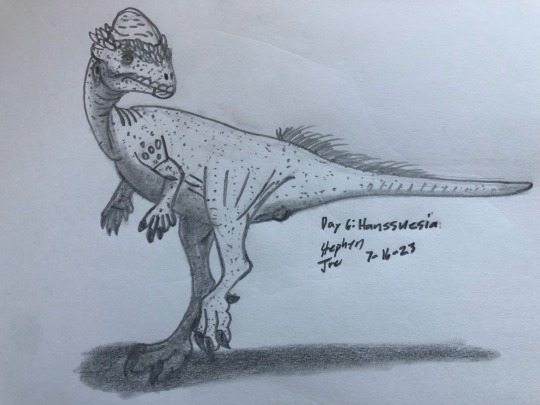
Day 6: Hanssuesia
A Pachycephalosaurid is synonymously known as Stegoceras (as of 2023 publication by three authors) of Judith River Formation.
#my art#dinosaur#paleoart#dinosaurs#myart#dinosauria#my drawings#ornithischia#marginocephalia#pachycephalosauria#pachycephalosauridae#hanssuesia#stegoceras#Judith River July#artists on tumblr#sketch pad
8 notes
·
View notes
Text
Me when Pachycephalosaurids show up in Prehistoric Planet 2:

12 notes
·
View notes
Text
Platytholus

Platytholus is a genus of pachycephalosaurid dinosaur from the Late Cretaceous of the United States, known from a partial skull. It was about two meters long, and had a thick dome on the top of its head like other pachycephalosaurs. In the case of Platytholus, the skull roof was relatively low and broad, and had unique imbricated roof tile-like ornamentation. This characteristic pachycephalosaurian dome was presumably for intra-species combat, though this theory is still under some debate.
71 notes
·
View notes